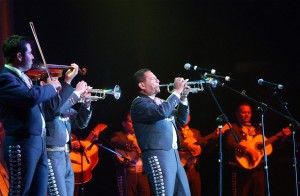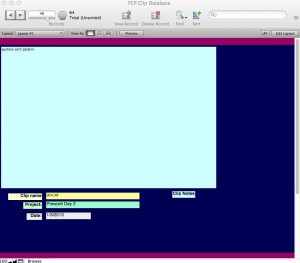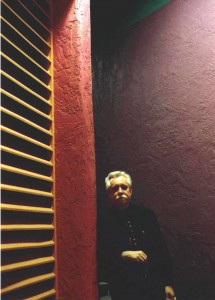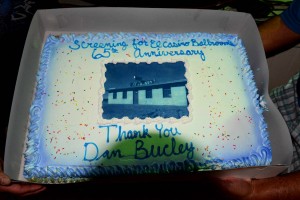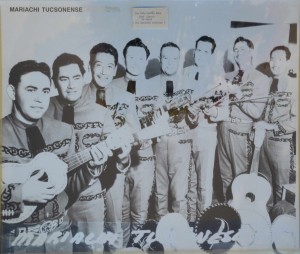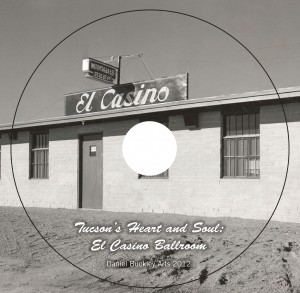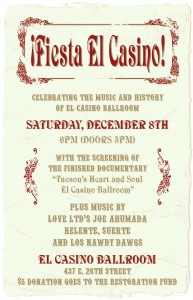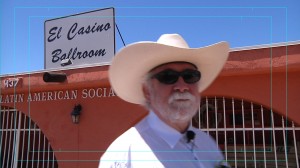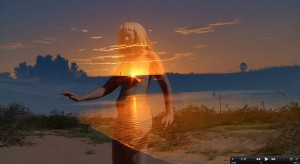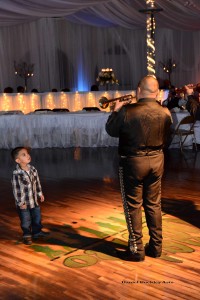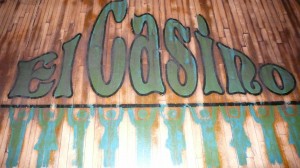 Looking back on 2012, so much of my focus has been on El Casino Ballroom – a place that is an embarrassment of riches to a documentary story teller. I heard so many great stories from so many different people, and met some true heroes who dedicated their sweat and blood to getting this venerable landmark back into the game after the roof blew off. They did it for the most selfless reasons, without fanfare or really any thought of acknowledgment.
Looking back on 2012, so much of my focus has been on El Casino Ballroom – a place that is an embarrassment of riches to a documentary story teller. I heard so many great stories from so many different people, and met some true heroes who dedicated their sweat and blood to getting this venerable landmark back into the game after the roof blew off. They did it for the most selfless reasons, without fanfare or really any thought of acknowledgment.
Also to really see how much El Casino Ballroom has meant to so many of us who have marked personal milestones and just had some of the greatest experiences of our lives there. It was a hard undertaking and one I’d do in a second again.
It also gave me one of the scariest and most personally transformational moments of my life when, 30 hours before its scheduled premiere in August, I heard the sound of a hard drive dying. I knew I had all of the video clips and photos backed up, so that was no concern. What I discovered within minutes though was that I had somehow not backed up the tiny file that binds all of this multimedia together into a film.
Even before that discovery my training from my Tucson Citizen newspaper days had kicked in. I knew that I had to transfer the clips and photos from the backup drive, which only had USB 2 connections, to a drive with connections fast enough to actually do the work, in this case Firewire 800 connections. That would take almost three hours. Shortly into that process I discovered that the only copy of the Final Cut Pro file that bound the film together left on any of the other drives was months old and represented an abandoned direction.
I had gotten huge press, and I was damned if I was going to head to the Fox with nothing to show. So I started thinking through how to proceed as the hard drive was copying. I knew what was most important to me was to tell the story, and that I had all the elements at hand to do so. I had the transcripts as well as my notes on how things were sequenced. All the clip markers were gone, but the timecode readings from the top of each page of the transcript gave me the coordinates I needed to shave a bit of time off the process. Thanks to Shawn Herreras and de Vie Weinstock for their meticulous attention to those details in transcribing the interviews, without which this rough version would have been much rougher.
What I didn’t know was how long it would take me to lay that story in. So I had to keep a second plan to create a partial film in the back of my mind as I proceeded. After eight hours I could calculate that I should have about 45 minutes left before I would have to export the film and show what I had if everything continued at the pace I’d set. In the end, I had 38 minutes, so I was pretty close. But I did finish the story line and did what I could in that 38 minutes to throw in a bit of extra footage and a few photos in the key spots. It was as patchy as the temporary tin roof that let the monsoon rains ruin half the dance floor at El Casino Ballroom when the roof blew off, but in both cases, it was survival mode.
When my alarm went off, I exported the film and burned the DVD. I wasn’t absolutely sure that would happen in time either, but it did. I got to the Fox three minutes before I was due and ran up to the projection booth to check it with Skip. Something came up on screen, and that would have to be good enough.

Crowd at the Fox Theatre Tucson for the August premiere.
The crowd was huge – close to 900 people. Imagine not having slept in a couple of days, having the biggest audience yet for one of your films, and having to announce that a rookie mistake on my part meant that what was intended to be a premiere would now instead become a work in progress. But I was fairly confident that I had been true to the story line, and hoped that might be enough to hold interest in the hall.
So then I sat down and saw it for the first time along with everyone else. There had been no time for me to ever see more than a minute or two at a shot. WIthin the first 15 seconds I realized Id somehow left out my intended opening shot. The edits meant some people twitched on screen like Max Headroom. But at the end, the audience exploded in applause.
We had a brief Q&A session with the audience, during which I invited members of the families of the three gentlemen who started El Casino Ballroom and a couple of key El Casino current staff to join us. I was delighted to discover that the widow of founder Adolfo Loustaunau, who I’d been trying to reach for months, was there in the audience. We invited her to join us on stage. It was an unexpected triumph.
After it was over I went home and crashed for about 20 hours. And then I went back to work to complete the film.
With no clear date as to when we might shoot for a completed film, I was able to shoot a few things alluded to in the original film which had not yet happened. One of the workers who rebuilt the hall, Javier Escalante, had talked about doing the work when his daughter was four with the intent that she would have her quinceañera there when she turned 15. And as a result of the delay, I was able to shoot it and put it in the film. The same was true of manager Fred Martinez’ youngest daughter’s wedding, which proved to be one of the most breathtaking transformations of that hall I’d seen in the 18 months of filming. And I got to shoot a few extra interviews with some folks I’d missed on the first pass.
The resulting final film, which premiered December 8, 2012, was much better than the original I’d lost with the August hard drive crash. We held it at El Casino Ballroom, and musical acts Los Nawdy Dawgs, Suerte, Relente and Joe Ahumada’s Love LTD played for free to help raise some money for the El Casino Ballroom restoration fund. Again, it was a success beyond my wildest dream.
But probably the most uplifting moment of the whole endeavor came between the two premieres when local musician David Membrila put a new committee together to finish the restoration of the other half of the El Casino Ballroom. Currently some legal changes of the structure of El Casino Ballroom are underway and a new not-for-profit entity called the El Casino Ballroom Cultural Center is being established. Once that’s done we’ll be pitching in to write grants and create a whole new set of memories for generations of Tucsonans to come.
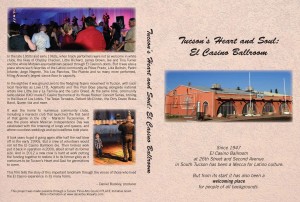 And so I leave the El Casino Ballroom documentary project. Copies of the DVD “Tucson’s Heart and Soul: El Casino Ballroom” are for sale at El Casino Ballroom and through my website. But I will never leave El Casino Ballroom. I’ll always be going back to recharge my batteries, experience more of the extraordinary music and culture of this town, and to do my part to make Tucson a better place.
And so I leave the El Casino Ballroom documentary project. Copies of the DVD “Tucson’s Heart and Soul: El Casino Ballroom” are for sale at El Casino Ballroom and through my website. But I will never leave El Casino Ballroom. I’ll always be going back to recharge my batteries, experience more of the extraordinary music and culture of this town, and to do my part to make Tucson a better place.
I go on in 2013 to create a film about the rise of the mariachi movement in Tucson. And wouldn’t you know it? One of the stories I heard from Tucson mariachi pioneer Tony Garcia was that it all got started through a youth mariachi club started at El Casino Ballroom by Mr. Loustaunau.
Sometimes the universe puts you where you need to be, whether you know it or not. I feel blessed that it put me at El Casino Ballroom this year, and introduced me to some of the most generous people I will ever meet – people who not only lived history but made it. It gets no better for a documentary maker than this.
I’d like to thank my partners in this project, Ralph Gonzalez and Julie Gallego, the whole Cine Plaza at the Fox team, the Fox Tucson Theatre, the Arizona Historical Society, KXCI, the Tucson Pima Arts Council’s PLACE Initiative program, and all of the individual contributors who pitched in when the Kickstarter campaign failed to meet critical mass. Without all of you, this film might never have come to pass. And without the inspiration of Ralph Gonzalez and Julie Gallego, the seeds for this and all of the Cine Plaza at the Fox projects might never have been planted. Thank you for giving me a life after newspapers.
Posted in Cine Plaza progress, Daniel Buckley Arts, Daniel Buckley Documentaries, El Casino Ballroom documentary, Mariachi blog, Uncategorized
Tags: Arizona, Arizona Historical society, CHISPA, Daniel Buckley, documentary, El Casino Ballroom, Foundation, Fox Theatre Tucson, KXCI, Latin AMerican Social Club, Tucson

